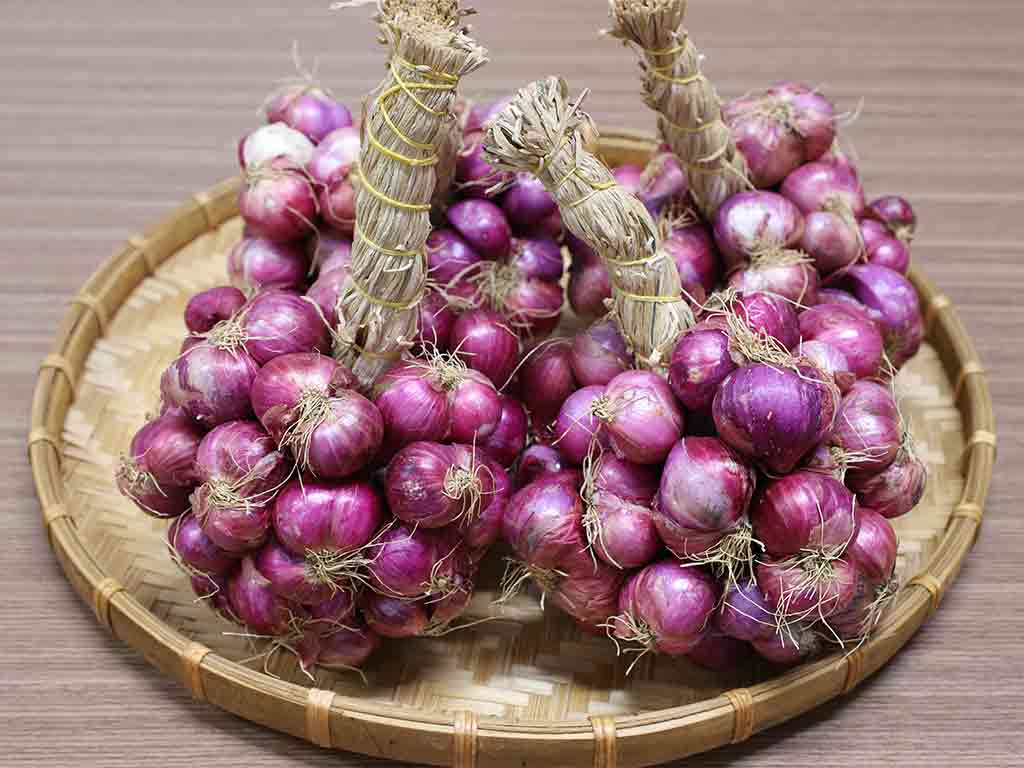
Shallots (Allium ascalonicum L.) are a familiar and indispensable spice in many Vietnamese dishes. Not only do they bring a distinctive pungent aroma, but shallot also have many nutritional values and play an important role in the country’s agriculture and trade.
1. Origin and Main Growing Regions
Shallots originated from the Central Asian and Mediterranean regions. Having been introduced to Vietnam a long time ago, shallot have adapted and developed strongly in many regions across the country. However, the most famous and high-yielding, high-quality shallot growing areas are mainly concentrated in:
- Soc Trang: Especially Vinh Chau region, which is known as the “shallot capital” of Vietnam. Vinh Chau shallot are famous for their large, round bulbs, beautiful purple color, and rich flavor.
- Ninh Thuan: Coastal districts such as Ninh Hai also have a significant area for growing shallot, with quality that is not inferior.
- Mekong Delta provinces: Some other provinces such as Bac Lieu and Dong Thap also grow shallot but on a smaller scale.

2. Nutritional Value
Shallots are not only a spice but also bring many health benefits thanks to their noteworthy nutritional content. Shallots contain:
- Vitamins: Vitamin C, vitamin B6.
- Minerals: Potassium, manganese.
- Antioxidants: Organosulfur compounds, flavonoids.
As a result, shallots are believed to have effects that support cardiovascular health, are antibacterial, anti-inflammatory, and boost the immune system.

3. Dishes with Fried Shallots
Fried shallot are an indispensable ingredient to add flavor and attractiveness to many Vietnamese dishes. Some dishes that often include fried shallot are:
- Various types of sticky rice (xôi): Chicken sticky rice, mung bean sticky rice, peanut sticky rice, etc.
- Steamed rice rolls (bánh cuốn): Sprinkling fried shallots on top adds crispiness and aroma.
- Noodle soups: Bún riêu (crab noodle soup), bún chả (grilled pork with vermicelli), mì quảng (Quang noodles), etc.
- Salads (gỏi, nộm): Enhances flavor and color.
- Stir-fried and fried dishes: Sprinkling fried shallots before serving.
4. Main Export Markets
Vietnamese shallots are increasingly asserting their position in the international market. The main export markets for Vietnamese shallot include:
- Asian countries: China, Malaysia, Singapore, Thailand, Philippines, etc.
- Other markets: Australia, Canada, some European countries, etc.
Increasingly improved quality along with stable production has given Vietnamese shallot great potential to expand their export markets in the future.
Other articles:
Other agricultural products:


